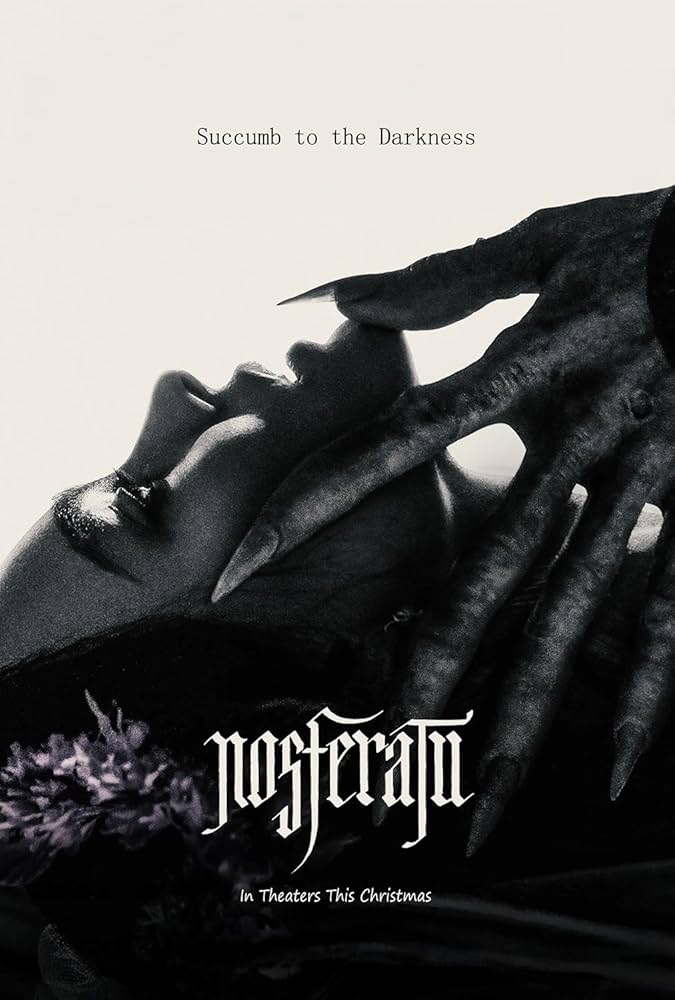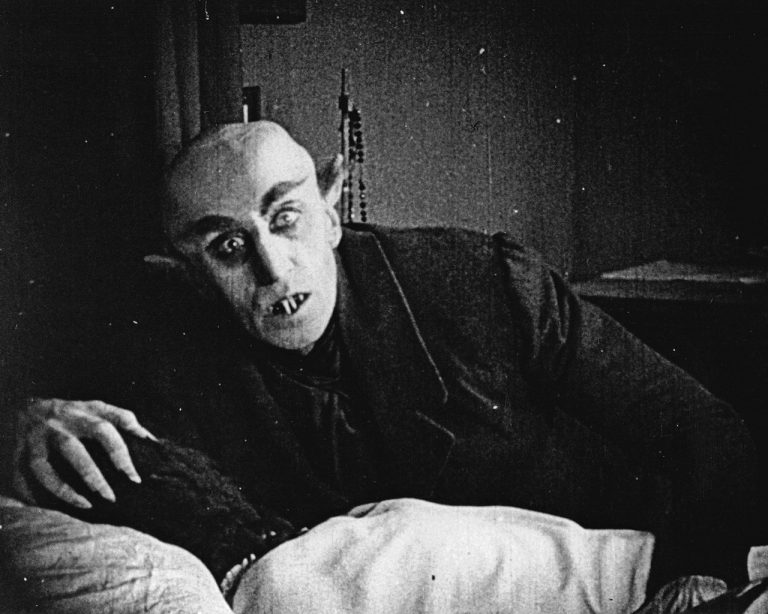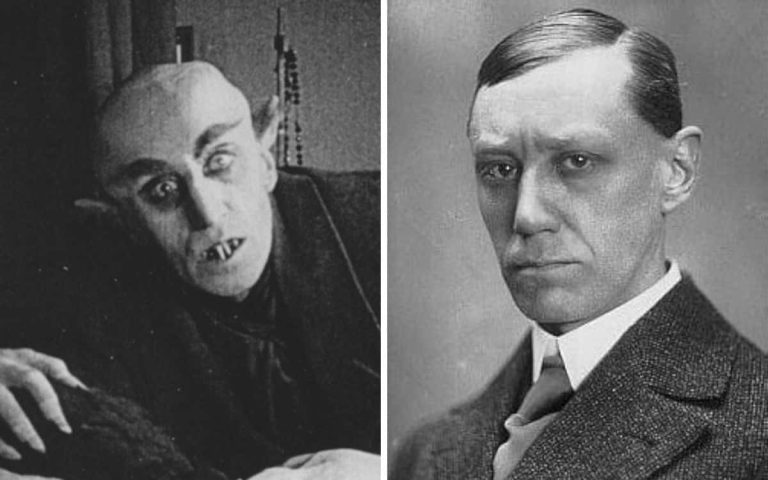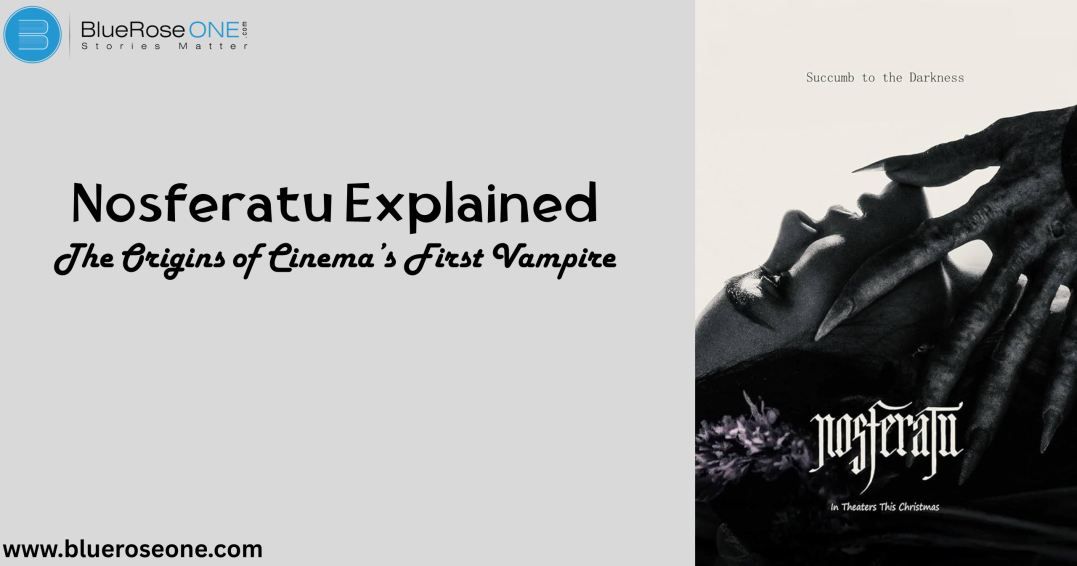Why Nosferatu Still Haunts Us
Before Bela Lugosi donned his cape or Twilight glamorized the undead, there was Nosferatu a creepy, claw-fingered nightmare that emerged from the silent shadows of 1920s Germany. This isn’t your modern-day, romantic vampire. Nosferatu is raw, unsettling, and terrifying.
“Nosferatu: A Symphony of Horror” wasn’t just the first vampire movie it was a landmark in film history. It defined horror cinema and showed the world that monsters could be more than just grotesque they could be unforgettable.

The Birth of the First Vampire on Film
Released in 1922 – A Silent Masterpiece
Premiering in 1922, Nosferatu was directed by F.W. Murnau and produced by the German studio Prana Film. Shot in black and white and totally silent, it relied on stark imagery, exaggerated expressions, and eerie pacing to scare the pants off audiences.
Directed by F.W. Murnau
F. W. Murnau was a visionary. He didn’t just make a movie he created an experience. His command of camera angles, symbolism, and eerie atmosphere brought Count Orlok to life in a way that still resonates.
You may also read: What Is Contemporary Fiction? Definition, Themes with Examples
Nosferatu vs. Dracula: What’s the Difference?
The Unauthorized Adaptation of Bram Stoker’s Novel
Nosferatu (1922) was an illegal remake of Bram Stoker’s Dracula made by German director F. W. Murnau and production company Prana Film. To avoid copyright violation, the producers changed the names of the characters (Count Dracula became Count Orlok) and altered the surroundings.
However, Stoker’s widow filed a lawsuit and won, culminating in a court order to destroy all copies of the film. Fortunately, a few prints survived, keeping this horror film icon.
Name Changes and Plot Tweaks
- Dracula became Count Orlok
- Jonathan Harker became Thomas Hutter
- Mina became Ellen
These changes weren’t enough to fool the lawyers. Stoker’s widow sued and almost succeeded in wiping Nosferatu from history.

Count Orlok – The Face of Fear
A Vampire Unlike Any Other
Nosferatu (1922) was an illegal remake of Bram Stoker’s Dracula made by German director F. W. Murnau and production company Prana Film.
To avoid copyright violation, the producers changed the names of the characters (Count Dracula became Count Orlok) and altered the surroundings. However, Stoker’s widow filed a lawsuit and won, culminating in a court order to destroy all copies of the film. Fortunately, a few prints survived, keeping this horror film icon.
The Power of Expressionist Makeup and Design
The power of Expressionist makeup and design in Nosferatu is epitomized by Count Orlok’s haunting appearance. Inspired by German Expressionism, the exaggerated features of elongated fingers, bald head, and rat-like teeth visually convey menace without relying on dialogue.
The stark contrast lighting and shadow-heavy design heighten his eerie presence, making him a symbol of creeping dread. This iconic aesthetic not only defined Orlok as cinema’s first vampire but also influenced the visual language of horror for decades.
You may also like: 10 Powerful Synopsis Examples for Every Genre (With Writing Tips)
The Storyline of Nosferatu
The Real Estate Agent and the Curse
The narrative of Nosferatu (1922) opens with real estate salesman Thomas Hutter, who is sent to Transylvania to sell a home in Wisborg to the enigmatic Count Orlok.
When Hutter arrives at the Count’s spooky castle, he realizes that Orlok is a vampire. After signing the contract, Orlok travels to Wisborg, carrying a deadly plague. When Hutter’s wife Ellen discovers the vampire’s secret, she sacrifices herself to break the curse and destroy Orlok.
The Slow Descent into Terror
The Slow Descent into Terror
Nosferatu’s narrative unfolds with an eerie, creeping dread that mirrors the slow descent into terror experienced by its protagonist, Thomas Hutter. As he travels from his home in Wisborg to Count Orlok’s remote castle in Transylvania, the tone shifts from curious adventure to unsettling horror.
The ominous signs of empty towns, superstitious villagers, and Orlok’s unnatural appearance build suspense gradually. This deliberate pacing amplifies the fear, making the supernatural menace of Nosferatu all the more disturbing and unforgettable.
You may also like: Jayne Anne Phillips: Life, Books and Literary Legacy
German Expressionism and Its Influence
Shadows, Angles, and Atmosphere
Nosferatu was largely influenced by German Expressionism, which included exaggerated shadows, precise angles, and an ominous mood. This cinematic trend used warped sets, dramatic lighting, and exaggerated forms to depict psychological tension and emotional distress.
F. W. Murnau used stretched shadows and strange geometry to convert regular scenes into frightening landscapes.
These visual approaches not only increased the dread in Nosferatu, but also paved the way for future gothic and horror films, making atmosphere a storytelling strategy in and of itself.
Symbolism and Visual Storytelling
German Expressionism, as seen in Nosferatu, transformed cinematic storytelling with its emphasis on symbolism and spectacular images. Directors employed exaggerated shadows, warped buildings, and harsh contrasts to convey inner feelings and psychological strain.
Count Orlok’s elongated features and looming presence represent death and disease, reflecting postwar worries in the 1920s. These visual decisions were more than just aesthetic; they conveyed meaning without conversation, influencing how filmmakers used mood and mise-en-scene in horror and other genres for decades.
You may also read: 10 Different Types of Poetry Every Literature Lover Should Know
Legal Battles and the Fight for Survival
The Stoker Family Lawsuit
The Stoker family lawsuit was a crucial legal dispute over the illegal adaptation of Bram Stoker’s Dracula by Nosferatu’s producers. Despite the film’s revolutionary prominence as cinema’s first vampire feature, the Stoker estate filed a copyright infringement lawsuit in 1925, claiming that Nosferatu duplicated Dracula without permission.
The court found in favor of the Stokers and ordered the destruction of all prints. However, many copies survived, allowing Nosferatu to remain a cult classic.
Attempts to Destroy the Film
Following its release in 1922, Nosferatu faced severe legal challenges when the heirs of Bram Stoker sued for copyright infringement, claiming the film was an unauthorized adaptation of Dracula.
The court ordered all copies of the film to be destroyed. However, some prints survived, hidden or distributed secretly, allowing Nosferatu to endure despite efforts to erase it. This legal battle highlighted early struggles between creative expression and copyright laws in cinema’s infancy.
You may also read: Who Was Emily Post? A Look at the Queen of Etiquette
Rediscovery and Revival
How Nosferatu Was Saved
How Nosferatu Was Saved is an intriguing chapter in film history. Following its publication in 1922, Nosferatu suffered legal fights over copyright infringement, resulting in the destruction of the majority of copies.
However, some prints were preserved in private collections and archives, allowing future generations to rediscover this silent horror classic. Throughout the twentieth century, restoration efforts revitalized Nosferatu, establishing it as a pioneering piece of vampire cinema and influencing other filmmakers around the world.
From Obscurity to Classic Status
Initially clouded by legal issues and limited distribution, Nosferatu fell into near obscurity following its 1922 premiere. However, the film’s spooky images and groundbreaking vampire representation eventually enthralled cinephiles and historians. By the mid-20th century,
Nosferatu was rediscovered as a landmark of German Expressionism and horror cinema, garnering legendary status for its evocative storytelling and long-lasting influence on vampire mythology in film.
You may also like: What Makes BookTok So Popular? Inside the TikTok Book Craze

Max Schreck – The Man Behind the Monster
A Performance So Convincing, It Sparked Myths
A performance so convincing, it sparked myths, Max Schreck’s portrayal of Count Orlok in Nosferatu became legendary. His eerie presence and unsettling movements were so authentic that rumors circulated about Schreck being a real vampire. The actor himself was mysterious and reclusive, which only fueled these legends.
Schreck’s chilling embodiment of the undead helped define the vampire archetype in cinema, leaving an unforgettable mark on horror history and inspiring countless portrayals that followed.
The “Is He Really a Vampire?” Urban Legend
Max Schreck, the actor who famously portrayed Count Orlok in Nosferatu (1922), became the subject of a lasting urban legend: that he was a real vampire.
This myth likely stems from his eerie appearance and intense performance, which deeply unsettled audiences. Schreck’s name itself means “fright” or “terror” in German, adding to the mystique. In reality, he was a dedicated stage actor with no supernatural ties, but the legend persists as a testament to his chilling portrayal.
You may also read: Best Classic American Literature Short Stories You Must Read
Nosferatu’s Place in Cinema History
The First Horror Icon
Nosferatu, a 1922 film directed by F.W. Murnau is largely recognized as cinema’s first great horror icon. The picture presented Count Orlok, a fearsome vampire persona unlike the idealized versions that came after.
With his monstrous appearance and spooky motions, Nosferatu established the benchmark for horror villains on film. Its revolutionary use of shadow and mood influenced other films, solidifying Nosferatu’s long-lasting legacy as a horror genre pioneer and the cinematic vampire archetype.
Influence on Filmmakers Worldwide
Nosferatu’s spooky graphics and inventive use of shadows have had a profound impact on filmmakers around the world. Its expressionist style influenced directors such as F.W. Murnau and subsequent auteurs Werner Herzog and Guillermo del Toro, who drew on its atmospheric tension and unsettling images.
The film’s approach to horror paved the way for vampire films and the broader genre, altering cinematic storytelling by combining myth and psychological dread, making it a timeless reference in horror and art-house cinema.
You may also read: Kendrick Lamar Pulitzer Prize: A Milestone for Hip-Hop Culture
Even a century later, Nosferatu feels relevant. It taps into primal fears, disease, death, the unknown and does it without flashy effects or jump scares. It’s proof that horror isn’t about gore. It’s about atmosphere, mystery, and things that go bump in the night.
Conclusion
Nosferatu is more than a vampire movie; it’s a cinematic relic that shaped an entire genre. From its eerie visuals to its troubled history, it remains one of the most important films ever made.
Whether you’re a film buff, horror fanatic, or curious newbie, watching Nosferatu is like peeking into the dark heart of cinema itself. Just don’t be surprised if you can’t sleep after.
Frequently Asked Questions
Yes, Nosferatu (1922) is widely considered the first vampire film, though it’s an unauthorized adaptation of Bram Stoker’s Dracula.
To avoid legal trouble with Bram Stoker’s estate, though, they were still sued and lost the case.
He’s grotesque, rat-like, and terrifying more monster than man, unlike the suave Draculas that followed.
A few rogue copies escaped destruction, allowing later generations to restore and preserve the film.
Yes, director Robert Eggers is working on a highly anticipated remake starring Bill Skarsgård.
















